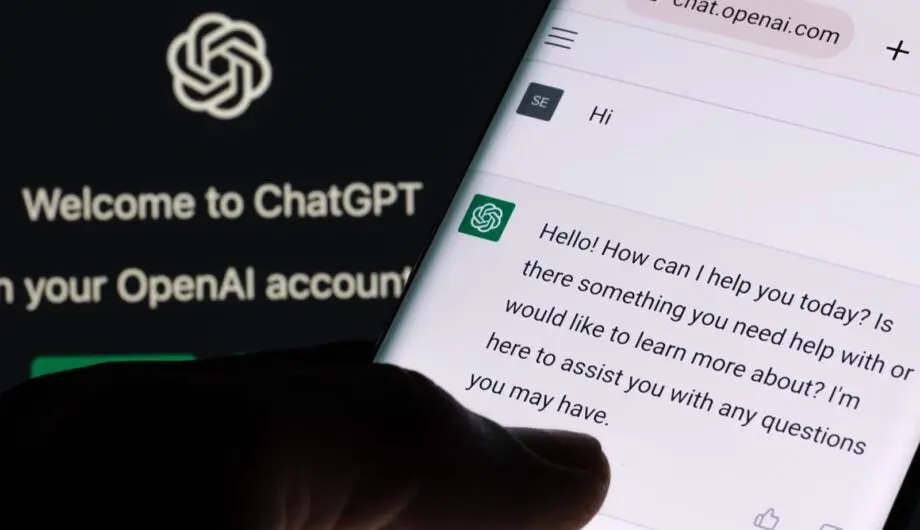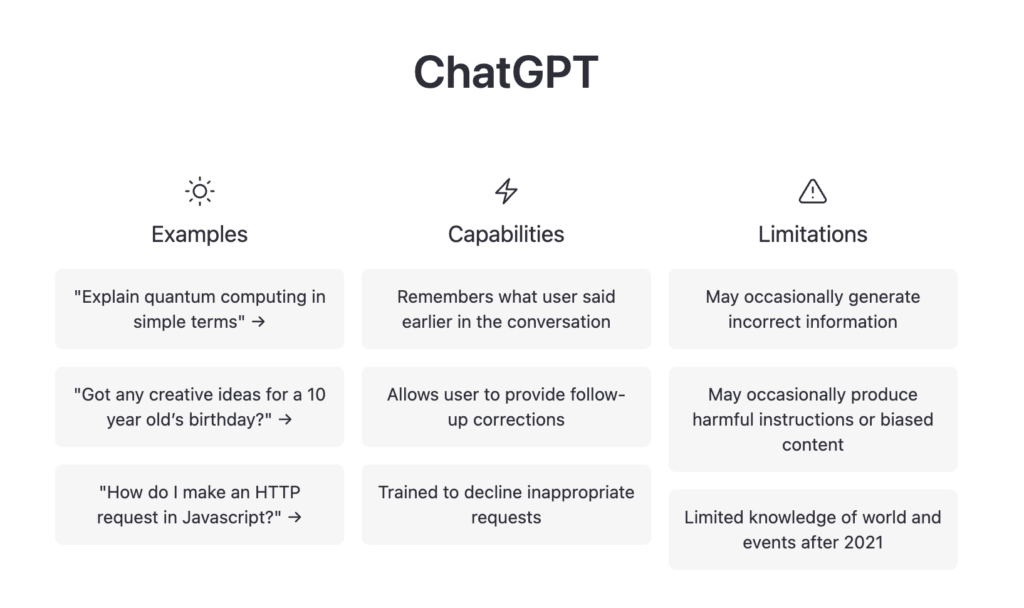
Have you heard of ChatGPT? Have you wondered what it is and if it could help your business? A few weeks ago, one of our team members sent me an email asking if I’d heard of or tried the chat AI. I hadn’t, and wasn’t interested. As someone who has been writing content for this website since 2006, I felt offended that someone might suggest that a chatbot could write content as well as I could.
So I didn’t even look into it, to be honest. But then I was on a long drive and I turned on an episode of The Daily, one of my favorite podcasts, and the episode was about ChatGPT, titled Did Artificial Intelligence Just Get Too Smart? And it was fascinating. That idea that you could type in some simple prompts and get well-written, informative answers, including short stories, long-form articles, and even code seemed impossible to me.
I decided I needed to try this after all.
I created an account at chat.openai.com (which is totally free, by the way.) I watched a YouTube Video to give me an overview of how it works, and then I asked it my first of three questions.
How can ChatGPT be used for business?
Below is the word for word response to my query.
ChatGPT is a powerful language model that can be used in a variety of ways to help businesses improve their operations and enhance their customer experience. Here are a few examples of how ChatGPT can be used for business:
- Customer Service: ChatGPT can be used to develop a chatbot for customer service. Chatbots can provide 24/7 support to customers and answer common questions. They can also help customers troubleshoot technical issues, track orders, and provide recommendations. Chatbots can be integrated with popular messaging platforms such as Facebook Messenger, WhatsApp, and Slack, allowing customers to reach out to businesses through their preferred channels.
- Sales and Marketing: ChatGPT can be used to develop a conversational marketing platform. Conversational marketing involves using chatbots and other conversational tools to engage with customers in real-time. Chatbots can be used to recommend products, answer customer questions, and provide personalized product suggestions. They can also be used to collect customer information, such as email addresses and phone numbers, to help businesses build their mailing lists.
- Content Creation: ChatGPT can be used to generate content for businesses. Chatbots can be trained to write product descriptions, blog posts, social media posts, and other marketing content. This can save businesses time and resources, as they no longer have to create content manually. Chatbots can also be used to generate product reviews and feedback, which can help businesses improve their products and services.
- Market Research: ChatGPT can be used to conduct market research. Businesses can use chatbots to conduct surveys and collect customer feedback. Chatbots can also be used to analyze customer sentiment and identify trends. This can help businesses make data-driven decisions and improve their products and services.
- HR and Recruitment: ChatGPT can be used to automate HR and recruitment processes. Chatbots can be used to screen job applicants, answer candidate questions, and schedule interviews. They can also be used to onboard new employees and provide training. This can save businesses time and resources, as they no longer have to manage these processes manually.
In summary, ChatGPT can be used in a variety of ways to help businesses improve their operations and enhance their customer experience. By leveraging the power of conversational AI, businesses can provide faster, more personalized service to their customers, while also streamlining their internal processes.
That’s the end of the ChatGPT content.
I’m pretty impressed to say the least. There are some clearly written examples of how you might use ChatGPT in your business. It’s easy to read, it makes sense, and it answers the question. Ok, maybe that was an easy question. So let’s move on to question 2.

Sure, this couldn’t work, right? Here’s the code it provided to me:
<!DOCTYPE html>
<html>
<head>
<meta name="viewport" content="width=device-width, initial-scale=1.0">
<style>
/* Style the columns */
.column {
float: left;
width: 33.33%;
padding: 10px;
box-sizing: border-box;
}
/* Clear floats after the columns */
.row:after {
content: "";
display: table;
clear: both;
}
/* Responsive layout - makes the columns stack on top of each other */
@media (max-width: 600px) {
.column {
width: 100%;
}
}
</style>
</head>
<body>
<div class="row">
<div class="column">
<h2>Column 1</h2>
<p>Some text..</p>
</div>
<div class="column">
<h2>Column 2</h2>
<p>Some text..</p>
</div>
<div class="column">
<h2>Column 3</h2>
<p>Some text..</p>
</div>
</div>
</body>
</html>
And below is the output of the code.
Column 1
Some text..
Column 2
Some text..
Column 3
Some text..
Yup, it worked. So I tried one more question, which I am posting as an entirely new blog post titled “Why is SSL important for business websites?” In this one, I did specify that I wanted the article to be 700 words in length, and it provided me with 649. So, not too bad.
Things to Note
Obviously, this is automated, so it’s not going to be perfect, and one of the main drawbacks, in my opinion, is that when you have AI write content for you, it lacks your specific voice. If what you want when you publish content is to have something that reflects your personality and your business, then definitely, this technology isn’t going to give you that. However, it can definitely get you started and let you expand the content to make it fit your personality.
When it comes to writing, so much of the reason why we read what we read is because of the way it’s written and how we respond to that writing, and that is something that often comes from the heart, which AI doesn’t have. (At least until the robots rise up against us. See, this is that personality and voice I was talking about.)
Also, keep in mind that ChatGPT is using limited knowledge for it’s AI, and has limited information after 2021 (so maybe using it as a source of tech knowledge isn’t going to be perfect) and it may not always be accurate. You definitely will want to read and verify any content you generate to make sure it’s accurate. Check out these notes from the ChatGPT dashboard.

It’s an interesting new option for generating content, and might be a great idea for website content for business owners who struggle with creating content. (Which is very common!) Give it a try for yourself and see if it can help you.
Amy Masson
Amy is the co-owner, developer, and website strategist for Sumy Designs. She's been making websites with WordPress since 2006 and is passionate about making sure websites are as functional as they are beautiful.
